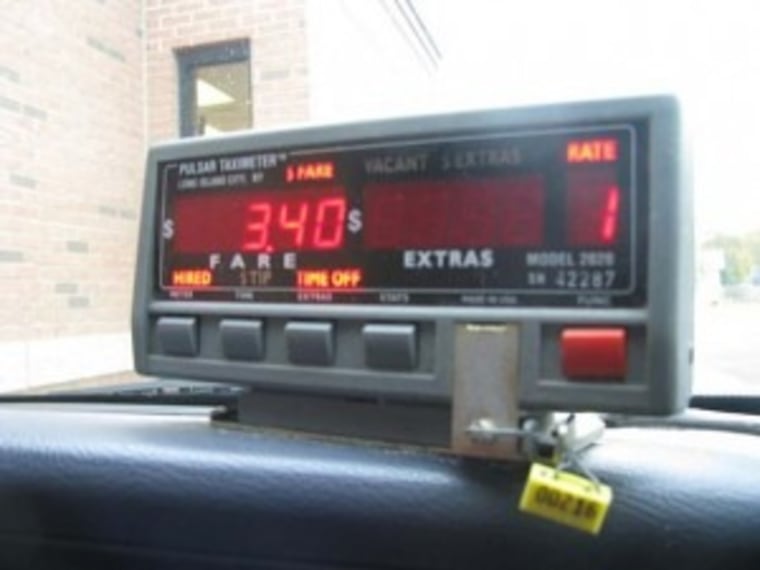Might you someday pay taxes by the mile?
It took Carol Hinka some time to get used to paying tolls when she moved to Central New Jersey two years ago, first on the Garden State Parkway, then the New Jersey Turnpike on her daily commute to her office just west of New York City.
But when she learned her insurance company was experimenting with the idea of charging by the mile — much the way the toll roads base their fees — she began to wonder why she couldn’t pay by the mile for all of her automotive expenses, rather than the current hodgepodge that includes fixed state and federal fuel taxes.
Hinka isn’t alone. A number of regulators and planners think the idea of charging by the mile is a great idea — something that could gain even more traction if electric propulsion grows in popularity. Since hybrids use less fuel than comparable conventionally powered vehicles and battery-electric vehicles use no fuel at all, there’s the potential for government coffers to lose billions of dollars a year in annual revenues used for road maintenance and other projects.
To replace those revenues, several states — along with a number of European countries — are exploring the idea of establishing per-mile fees that would use GPS navigation systems to track how much a vehicle is driven. There could be a fixed-rate charge or the fee might be adjusted to reflect the fuel-efficiency of a vehicle, perhaps even when and where it was driven.
A proposal introduced in the Oregon legislature, for example, proposed a charge of about 0.85 cent per mile through 2015, with the figure jumping to 1.85 cents per mile by 2018. The typical American motorist getting a combined 25 mpg today pays just under 2 cents a mile in fuel excise taxes — which vary widely by state. So the initial figure would not be out of line with the portion Oregon itself currently charges — though the 2018 fee would likely amount to a fuel tax increase for most drivers.
The Oregon measure has been stalled in debate, and similar proposals in Texas, Minnesota and other parts of the country haven’t caught on yet, either.
In Europe, with its crowded roads and a growing sensitivity to environmentally related issues, the issue of per-mile road charges has been widely discussed and was the subject of an extensive test in the Netherlands, where traffic problems are considered to be among the most severe on the Continent.
That was supposed to lead to the institution of a national per-mile system in 2012, but despite the seeming success of the test project, it was shelved after a new government took office last year.
A report in the International Herald Tribune says the project wasn’t popular but did prove effective, with many participants, after watching a taxi-like meter on the dashboard count off the added charges, deciding to reduce their driving or even switch to mass transit.
The Dutch system would have not only charged by the mile but adjusted the fee depending on the fuel efficiency of the vehicle being driven. Driving in rush hour would’ve been more expensive, as would taking more congested highways.
“The trials work well, but it’s first a psychological issue and second a political choice,” Eric-Mark Huitema, a specialist with IBM, which developed the system, told the newspaper.
For American motorists, the idea seems to be running into resistance among those who fear Big Brother will know too much about their comings and goings – though advocates insist the system won’t actually track specifically where a vehicle is driven.
Few experts anticipate the issue to go away. It’s unlikely electric vehicles will gain more than a small share of the market for at least the next decade, according to a recent study by J.D. Power and Associates, which expects hybrids, plug-ins and battery-electric vehicles combined to achieve no more than a 7 percent share of the U.S. market by 2020. But even conventional vehicles will be using significantly less fuel in the years ahead, sharply reducing government revenues.
By 2025, the federal corporate average fuel sconomy standard will reach 54.5 mpg, about twice as high as when the President Barack Obama took office. With Americans actually driving less as fuel prices soar, there seem few options to recover lost highway revenues other than raising excise taxes or adopting an alternative system, acknowledges Mary D. Nichols, chair of the California Air Resources Board.
“It is an issue we will have to deal with,” Nichols told TheDetroitBureau.com earlier this year, though it is not one the environmental bureaucracy is happy to deal with.
That’s especially the case when it comes to electric power. Advocates like to promote the fact that it costs the owner of a battery car like the Nissan Leaf around 2 cents a mile for the electricity it uses — compared with 10 cents or more for a comparable gas-powered vehicle. So adding just a penny or two in new fees could mean a significant percentage increase in driving costs — and reduce the savings on fuel needed to offset the higher price for a battery vehicle.
But with the increasing strain on government revenues, few expect the idea of a pay-as-you-drive system to go away. Oregon advocates plan to keep pressing for a per-mile tax bill, and in Europe, Belgium will launch a small test program starting in September. If the tiny country adopts the idea across the board, bigger nations like Germany are expected to follow.
More from The Detroit Bureau:
